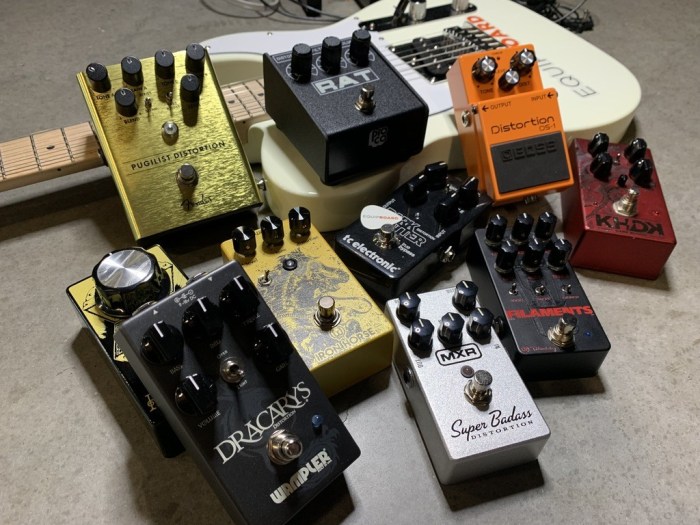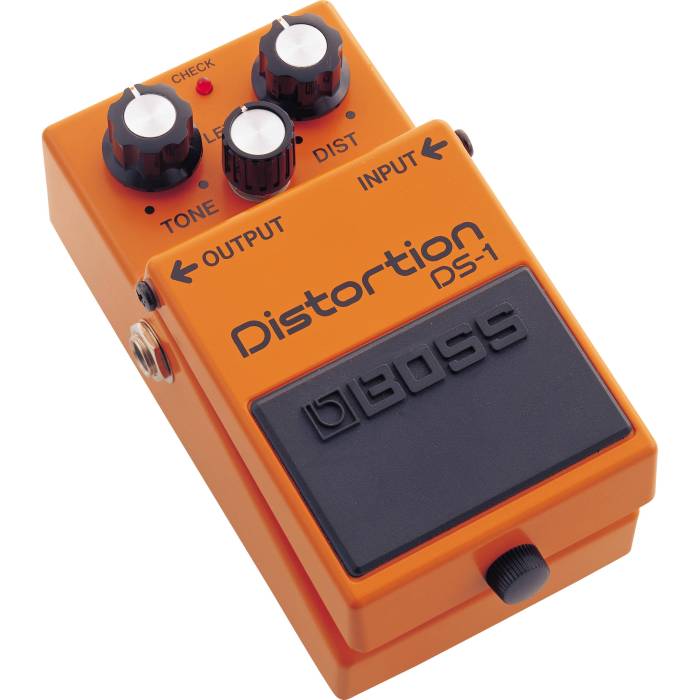A distorting device used with an electric guitar – Distorting devices, indispensable tools in the electric guitarist’s arsenal, have the remarkable ability to transform the instrument’s sound, unlocking a vast sonic landscape of distortion, overdrive, and fuzz. These devices, ranging from distortion pedals to overdrive pedals and fuzz pedals, offer a diverse array of effects that can enhance or modify the sound of an electric guitar, making them essential for creating signature sounds and shaping musical genres.
Overview of Distorting Devices

Distorting devices are electronic devices used with electric guitars to alter the sound of the instrument. They work by adding distortion, overdrive, or fuzz to the guitar signal, resulting in a wide range of tonal effects.
Distorting devices come in various types, including distortion pedals, overdrive pedals, and fuzz pedals. Each type produces a distinct sonic characteristic, allowing guitarists to shape their sound and create a variety of musical effects.
Effects of Distorting Devices
Distortion pedals produce a gritty, saturated sound with increased sustain. Overdrive pedals create a warmer, more subtle distortion, while fuzz pedals generate a thick, fuzzy tone.
These effects can be used to enhance the natural sound of an electric guitar, add warmth, sustain, or create a distinctive distorted sound. Famous guitarists such as Jimi Hendrix, Jimmy Page, and Eric Clapton have used distorting devices to create their signature sounds.
Using Distorting Devices, A distorting device used with an electric guitar
To use distorting devices effectively, guitarists adjust the settings to achieve the desired sound. The gain control determines the amount of distortion, while the tone control adjusts the frequency response.
Experimentation is key to finding the right settings for different musical styles. Some tips include using a light touch on the strings for a more subtle distortion, or playing with a heavier attack for a more aggressive sound.
Applications of Distorting Devices
Distorting devices are commonly used in various musical genres, including rock, blues, and heavy metal. They can create specific musical effects such as lead guitar solos, power chords, and rhythm guitar parts.
For example, in rock music, distortion pedals are used to create the classic overdriven sound of electric guitars. In blues, overdrive pedals add warmth and sustain to the guitar tone, while in heavy metal, fuzz pedals generate the thick, distorted sound characteristic of the genre.
FAQ: A Distorting Device Used With An Electric Guitar
What is the purpose of a distorting device?
Distorting devices alter the sound of an electric guitar by adding distortion, overdrive, or fuzz, creating a range of sonic effects.
How do distorting devices work?
Distorting devices use electronic circuits to manipulate the guitar’s signal, introducing clipping or saturation, which results in the characteristic distorted sound.
What are the different types of distorting devices?
Common types of distorting devices include distortion pedals, overdrive pedals, and fuzz pedals, each offering unique sonic characteristics.
How can I use a distorting device effectively?
Experiment with different settings and techniques to find the desired sound, considering factors such as gain, tone, and output level.
What are some famous guitarists who use distorting devices?
Numerous guitarists have utilized distorting devices to create their signature sounds, including Jimi Hendrix, Jimmy Page, and Eddie Van Halen.


